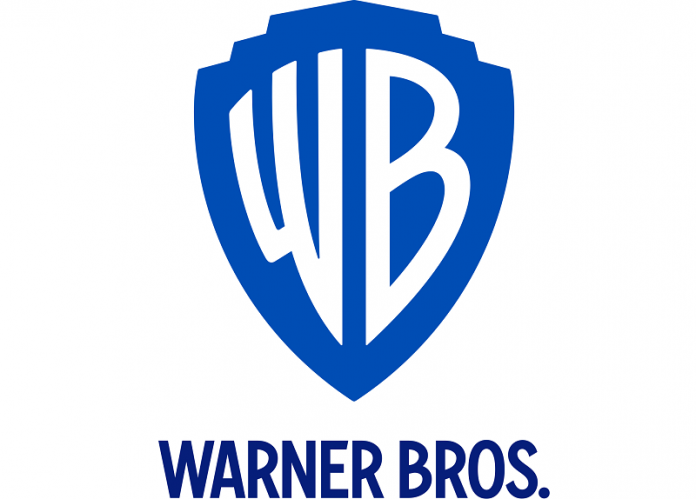This article is written by Vikash Dhaka, pursuing a Diploma in Intellectual Property, Media, and Entertainment Laws from LawSikho.com.
Table of Contents
Introduction
Warner Brothers or WB or Warner Bros. is an American multinational media and entertainment company. The company majorly deals with television, animation, films, and video games. The company has many film studios such as Warner Bros. Pictures, DC Films, New Line Cinema. Apart from film studios, the company owns many television production companies such as Animation and Cartoon Network Studios, Warner Bros. Television Studio, etc. Warner Brothers also own cable television channels such as Cartoon Network, Boomerang. WB also published many comics under DC comics.
Batman is a very famous American comic published by DC Comics (Warner Bros.). The character of Batman was a Superhero who drives a Batmobile. Batmobile is the fictional car used by Batman. The designs, style, and posture of the Batmobile became supremely popular. Warner Brothers owns all the IP rights in Batman including the design on the Batmobile. Mark Towle is the owner of the car building shop ‘Gotham Garage’. He manufactured many cars which were identical to the Warner Bros’s Batmobile. WB filed the case against Mark Towle for infringement of copyright. In this article, the author has spoken about character rights and how to protect the characters in a film or shows.
Personality rights
Personality rights are nowhere defined in the statute of the US. But time and again, the honorable court has interpreted the personality rights in many cases. Personality rights are the amalgamation of publicity rights and the right to privacy. Personality rights are the rights that are with a certain individual who enjoys a name. The right of exploitation of such an individual’s image, photo, voice, signature, etc. for commercial gain is the personality rights.
Right to publicity has been first discussed in the case Haelan Laboratories v. Topps Chewing Gum. The court said that the right of publicity is the individual’s right to use his personality traits such as photo, signature, voice, etc. It is the commercial value of an individual’s name and fame in the market. This right empowers the individual to prohibit the unauthorised usage of their identity or commercial value.
The right to privacy is the right of every individual on his own body and prohibits the usage of personality publicly without permission, as was held in the case of Griswold v. Connecticut. Personality rights are vested with actors, sportsmen, singers, or any celebrities. The usage of their personality trait without permission may invite legal action against the user.
 Character rights
Character rights
Fictional characters in any movie or show etc. can be protected under the Copyright Act of 1976. To protect the character rights in a film or web series, the owner has to prove the uniqueness and distinctiveness of the character. There are some examples such as Wonder Woman, James Bond, etc. these characters are more popular than the film or show. So, the owner of the film where such characters were shown wants to protect not only the film but also the characters of the film.
In the case Nichols v. Universal Pictures, the court commented on the criteria of protection of character rights. The author or the creator has to prove the distinctiveness of the character. The more character-specific and developed, the more are the chances of copyright protection. For example, the alien is a very generic character in any show or movie and the same cannot be protected under copyright law. However, if the Alien has certain specific features such as a big nose with very small ears, a wand on the top of the head, etc. such features contribute to the uniqueness of the character and may be protected under copyright law.
The US is the largest hub of the media and entertainment industry that produces around $ 700 billion. Indeed, there is a need to protect the characters in such Industries. The US has given Superman, Spider-man, Batman, Avengers, etc. to the whole universe. These characters are celebrated all over the world. The creator has protected the characters under the copyright act and trademark. Fair use is an exception under the Copyright Act. Fair use empowers individuals to criticize or review or condemn the characters. People have formed various parodies of the characters. Sometimes, the court gave more importance to fair use in certain cases. The creator has to make sure that the characters are unique and distinct, otherwise, it will be difficult to protect the same under the Copyright Act.
Character merchandising
In the entertainment world, character merchandising generates a lot of revenue. Character Merchandising is a market strategy where the goods or products possess or have certain characteristics such as name, an image of a fictional character, or a real character. The customer tends to incline to the goods where there is a poster or a picture of a celebrity or a cartoon character embedded or implanted on the goods. For example, the image of Spider-man on t-shirts or cups or lunch boxes, etc. is a classic example of character merchandising. There are three different types of character merchandising which are as follows:
1. Personality merchandising
In this character merchandising, personal traits such as image, voice, name, etc. of a celebrity are exploited concerning the goods and services. For example, the brand name of the perfume is David Beckham who is a popular football player.
2. Non-real or fictional character merchandising
Fictional characters or cartoon characters are very much famous among children. Children are very much attracted to the goods where their favorite character is implanted. For instance, the picture of a spider-man on the lunch box or notebook.
3. Image merchandising
In this type of merchandising, the character and the real person who played that character cannot be distinguished. The public associates with the character as well as with the person who played that character. For instance, Daniel Radcliffe who played Harry Potter, both real and reel character is popular among the public.
Warner Brothers v. Gotham Garage
The District Court of the US gave a judgment in the favor of the Warner Brothers. The key issue was whether the WB can prohibit Mark Towle from copying the automobile design of Batmobile. The court held that the Warner Brothers enjoy the rights in the characters of Batman and there is an infringement of their derivative works by Mark Towle. The court relied on the Character Delineation Test. This test focuses on the distinctiveness and significance of the character in a show or film. Without the presence of that character, the story cannot be told. Such characters are entitled to copyright protection. For instance, in the movie Rocky Balboa, the story cannot be conveyed to the audience without the presence of the character Godzilla.
In India, the court has given copyright protection to the characters in a film. One such case is Arbaaz Khan v. North Star Entertainment. In this case, the Bombay High Court has given copyright protection to the character ‘Chulbul Pandey’ of the film ‘Dabangg’. The court relied on the character delineation test and said that the character is unique and distinctive. The character can be distinctively recognised from the film.
Trademarks on the characters
We can trademark the name, image of the character as a logo, or brand name of any company. For example, Batman can be a trademark of a company or the image of Batman can be a logo of the company. Trademarks help the real owner from the fraudulent practice of using his trademark from the competitors in the market. To register the character’s name as a trademark, the character should be original and unique. There should not be any similar registered trademark under the United States Patent and Trademark Office. The character of the film or series can be mocked or reviewed under the doctrine of fair use. Trademark doesn’t protect such usage of the registered name.
Conclusion
Every person puts their heart and soul into any film or show. Many films took at least three to four years to make. The producer put a lot at stake. When the film reaches the audience, certain characters in the film will be admired by the audience. We all know that film is protected under the copyright law. But, what about the characters in the film? Can we protect the characters of a movie? The answer is yes. We can protect the characters in the film. We can not only protect the character but also register the character’s name, image under the trademark law. There is already an audience attached to the character’s name and fame. When we trademark such characters, the brand value and the profit will be high. The creator of the character has merchandising rights. The creator can generate a lot of revenue by exploiting character merchandising. Character merchandising is the exploitation of the character’s name and fame with goods and services. For example, the character Cinderella is popular all over the world. There can be toys on the character Cinderella. Warner Brothers filed a case against the owner of the shop ‘Gotham Garage.’ ‘Gotham Garage’ was producing cars that were identical to the Batmobile (a fictional car used by the character Batman). The court held that ‘Gotham Garage’ was infringing the derivative rights of the WB.
References
- https://www.jayaramlaw.com/
- https://www.theleaflet.in/
- https://www.nolo.com/
- https://www.mondaq.com/
- https://www.theiplawblog.com/
- https://secureyourtrademark.com/
Students of LawSikho courses regularly produce writing assignments and work on practical exercises as a part of their coursework and develop themselves in real-life practical skills.
LawSikho has created a telegram group for exchanging legal knowledge, referrals, and various opportunities. You can click on this link and join:












